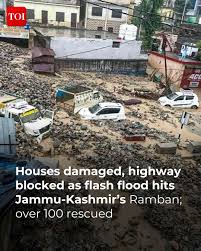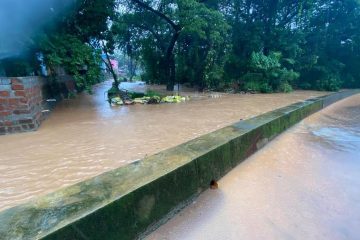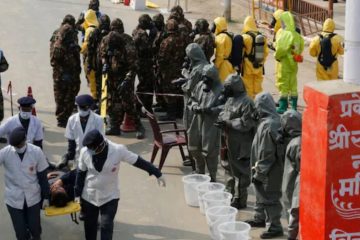Understanding the Jammu Kashmir Flash Floods

Introduction: The Impact of Flash Floods in Jammu Kashmir
Flash floods in Jammu and Kashmir have become a growing concern, especially during the monsoon season. These floods not only lead to devastating loss of life and property but also disrupt the delicate ecosystem and socio-economic stability of the region. Recent events have highlighted the urgency for better disaster management strategies in the face of increasingly erratic weather patterns.
Current Situation: Recent Flooding Events
On October 15, 2023, heavy rainfall led to severe flash floods across various districts in Jammu and Kashmir. Reports indicate that over 100 individuals have been evacuated from affected areas, with significant damage to homes and agricultural land. The Indian Meteorological Department (IMD) has warned of continued rainfall in the coming days, prompting officials to remain on high alert.
The flash floods originated from the incessant rainfall that caused rivers and streams to overflow their banks, particularly in districts like Srinagar, Anantnag, and Poonch. Rescue operations are being coordinated by local authorities, with the National Disaster Response Force (NDRF) deployed to support evacuations and provide relief to affected families.
Government Response and Community Efforts
The Jammu and Kashmir government is urgently assessing the damage caused by the floods and is focusing on relief measures for the displaced residents. Emergency assistance has been mobilized, with temporary shelters set up for those who have lost their homes. Local NGOs and community organizations are collaborating with government agencies to provide food, clean water, and medical aid to those in need. But volunteers have indicated that more resources are necessary as the floods continue to impact new areas.
Future Forecast: Preparedness and Prevention
Experts suggest that climate change is exacerbating weather patterns, leading to unpredictable monsoon rains in Jammu Kashmir. Moving forward, state authorities need to invest in advanced weather forecasting systems and develop robust flood management infrastructure to mitigate future risks. Awareness programs should also be conducted to educate residents on emergency preparedness measures during such natural disasters.
Conclusion: The Significance for Residents
As flash floods continue to pose serious risks to life and property in Jammu and Kashmir, the importance of effective disaster response and community resilience cannot be overstated. For residents, staying informed about weather updates and engaging with local emergency services can significantly reduce the impact of such disasters. With enhanced preparedness and appropriate measures, the region can better cope with these challenges and safeguard lives.









